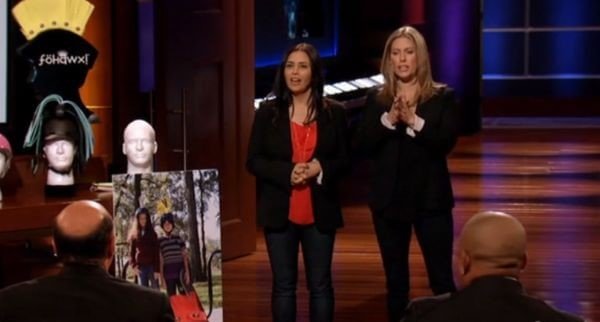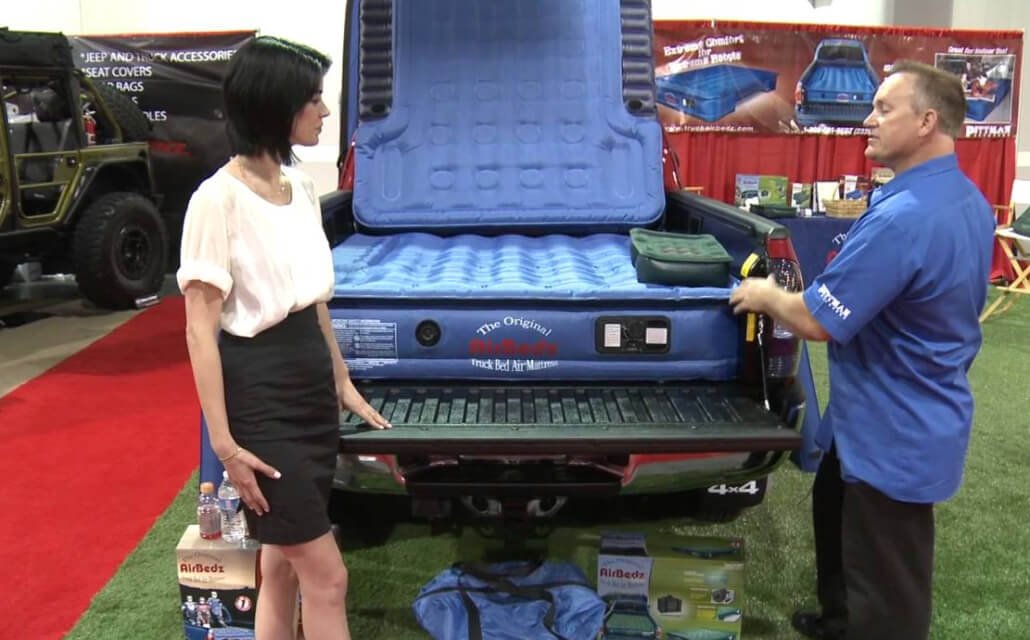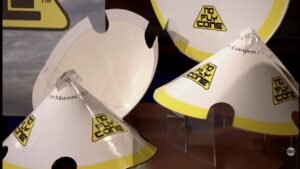They pitched on Shark Tank, made the Sharks laugh, and brought kid helmet style into the Tank. But did FoHawx actually cash in? Or did their mohawk dreams crash after the Shark Tank exposure faded? Here’s the real play-by-play—and what every street-smart entrepreneur needs to know about why some ideas stick and some never take off.
Contents
Toggle1. The Pitch That Started It All
Picture this: Two hustlers walk into the Shark Tank with a box of neon foam mohawks for bike helmets. Jocelyn Fine and Kelly Dineen, the creators of FoHawx, weren’t afraid of looking bold or sounding wild—because standing out was their whole business model.
The idea? Make safety cool for kids. When you can’t force a five-year-old to strap on a bike helmet, you sell them on looking like a punk rocker or a unicorn instead. I’ve seen far wilder ideas get funding, but this one was built around solving a daily parent struggle.
Jocelyn and Kelly didn’t waste time. They told the Sharks that FoHawx was meant to transform boring safety gear into a piece of personal flair. Mohawk, ponytail, or spikes—the more outrageous, the better. On paper, this should have been a slam dunk with parents and their little daredevils.

2. Why FoHawx Thought They Had an Edge
Selling to parents? That’s tough. Selling to their kids? If you crack that code, you print money. FoHawx thought they’d done just that.
A big reason Jocelyn and Kelly had the guts to step in front of the Sharks was their track record: FoHawx was in 80 stores nationwide before they ever got on Shark Tank. That’s not lawn-chair entrepreneurship—that’s real hustle and late nights packing boxes. They had proven they could take feedback, move product, and pitch retail buyers.
The edge, or so they thought, was their accessory’s custom feel and removable design. Kids collect them, swap them, and nobody gets bored. In the toy world, that kind of collect them all mentality is gold—think Beanie Babies, but strapped to your helmet.
They’d gotten positive reviews, parents loved the idea for safety, and buyers were at least willing to give shelf space. On paper, they checked off more boxes than half the pitches that walk into the Tank.
3. The Numbers: FoHawx Net Worth And Valuation
Let’s get into the numbers. This is where dreamers meet reality.
Jocelyn and Kelly asked for $150,000 for 30% equity. Break it down, and that’s a $500,000 valuation. Not astronomical for a consumer product, especially with some early traction and 80 retail doors already open.
Now, here’s how the math played out:
- Total revenue before the pitch? Just $50,000 per year.
- That’s roughly $625 per store, not exactly setting sales records.
I respect optimism, but at $19.99 a pop, those numbers didn’t add up to a sustainable business for the Sharks. I’ve watched founders go in with wild valuations, but the ones who get deals usually have real revenue velocity, not just potential.
4. What Went Down in the Shark Tank
You could see the hope on Jocelyn and Kelly’s faces as they started pitching. They rolled in with the smiles, the bright colors, and the initial buy-in. But the Sharks smelled weakness—fast.
Kevin O’Leary, Mr. Wonderful himself, didn’t sugarcoat it. He grilled them on their margins, costs, and especially that $19.99 price tag. Mark Cuban called out the lack of movement in sales, and Lori Greiner pressed for their plan to hit mass retail. Barbara Corcoran, who’s backed tons of kid-focused products, asked about competitors. That’s when cracks started to show.
The founders were convinced they had no real competition. The Sharks, who see hundreds of pitches a year, knew that’s never true. Kids’ accessories is a war zone—there’s always someone else with a cute add-on.
One by one, the Sharks dropped out. Not enough sales. Wrong price. Not defensible. The final Shark closed with the classic, I’m out. The Tank was silent.
5. Where Things Fell Apart
Most products tank for boring reasons, not dramatic ones. Here’s the three-alarm fire that burned at FoHawx:
1. High Price, Low Volume: $19.99 is an impulse buy for some parents, but not for most. Especially for something that’s easy to lose or outgrow. When the price keeps people from owning three or four, you choke your own upside.
2. Weak Sales Numbers: Getting into 80 stores is good hustle. Selling next to nothing in each? That’s a warning sign. This is what happens when you prioritize appearances over actual repeat customers.
3. Missed Competition: The founders refused to acknowledge the knockoffs or get real about the market. That’s like playing chess blindfolded. The Sharks want founders who know their enemies.
4. Big Dreams, No Ground Game: They talked Walmart, Toys R Us, and global expansion before they’d nailed product-market fit here at home. That’s cart before horse, plain and simple.
I’ve watched founders clutch tight to dreams while the numbers slip away. FoHawx was no different.
6. What Happened After the Cameras Cut
Shark Tank can be a miracle-maker for some, but for others? It’s just a bright light before the end.
After their episode aired, the big retail interest vanished, fast. Stores dropped the product. There’s nothing more brutal than watching your shelf space shrink, but in this game, it happens daily.
Jocelyn and Kelly hustled for a while—tried pushing online, went back to the drawing board on design, and looked for new partners. But the invention had lost its buzz. By late 2015, talk of Walmart deals or big-box shelves was dead. Without a massive marketing spend or a viral moment, the business just couldn’t hold on.
7. Is FoHawx Still In Business?
Let’s cut to it: as of 2025, FoHawx is out of the game for good. The website? Gone. Amazon listings? Nada. Ask for them at a bike store and they’ll look at you like you’re asking for a VCR.
There’s no social media, no restocks, no e-commerce revamp—empty digital streets where a business once stood. This isn’t a case of pivot and rebuild. This is a straight-up exit, the kind no founder likes to admit.
The question pops up on forums like SharkWorth: Can I still buy FoHawx? Short answer—nope. Maybe you’ll dig up an old package at a garage sale, but don’t plan on starting a collection.

8. Lessons Every Hustler Can Learn
Look, I don’t write these stories to throw salt. Every founder hits brick walls. If you’re plotting your own side hustle—especially on a kids’ product—you need to get real about a few things:
Price Matters: $19.99 might’ve covered their costs, but parents weren’t biting. The second your target buyer squints at the price, rethink everything.
Don’t ignore the Competition: Even if it’s a different style, assume someone is nipping at your heels. Show the Sharks your battle plan, not just your dream board.
Validate Before Scaling: 80 stores with weak sales? That’s validation you don’t have a winner yet. Get one store obsessed before adding the next ten.
Hope Is Not a Strategy: Big-box deals, licensing, international play—those all sound glorious in a pitch deck. If you’re not selling out locally, those pipe dreams turn into headaches.
Shark Tank Is Just the Start: The spike in attention is real. Sometimes that’s enough. But if you aren’t already humming, the buzz fades and the bills pile up fast.
9. Final Word: Where The FoHawx Story Lands
It’s easy to fall for the all you need is a Shark Tank spot myth. But the FoHawx journey should make every founder pause. Ideas are cheap—execution is everything. Good packaging and a clever pitch aren’t enough if you don’t nail your numbers, know your enemies, or win the shelves and the wallets of customers.
If you learn anything from FoHawx, let it be this: hustle matters, but focus matters more. Every kid wants to look cool, but not every parent will pay for it—especially twice. The founders aimed high, but their feet weren’t on the ground. In this business, hype fades. Only the relentless ones build something that lasts.
If you’re watching Shark Tank dreaming of your own pitch, remember: the cameras film your best day. But real success? That’s only proven after the credits roll.
FAQs
1. Is FoHawx still in business after Shark Tank?
No, FoHawx is no longer in business as of 2025. The company’s website is gone and the product is off the market.
2. Did the founders get a Shark Tank investment deal?
No deal. Jocelyn Fine and Kelly Dineen left Shark Tank without an investment.
3. Where can I buy FoHawx helmet accessories now?
You can’t. The company shut down, and there are no new or restocked products anywhere, online or retail.
4. What went wrong with FoHawx’s business model?
High price, slow sales, ignoring competition, and chasing big retail before real traction—big rookie mistakes.
5. How much was FoHawx worth when they pitched?
They valued the company at $500,000—$150,000 for 30% equity. The sales numbers didn’t support it.
6. Who were the founders behind FoHawx?
Jocelyn Fine and Kelly Dineen, two moms who wanted to make helmets fun for kids, led the charge.
7. Did any of the Sharks stay in touch after the show?
No evidence of post-show involvement from any Shark. The episode was the end of that chapter.
8. What are some alternatives to FoHawx helmet products?
Check Amazon and big box stores for helmet mohawks, spike add-ons, and animal-themed covers—lots of copycats remain.
Want the straight facts and the inside scoop on Shark Tank business outcomes? Stick with SharkWorth, and get the truth behind every headline.










